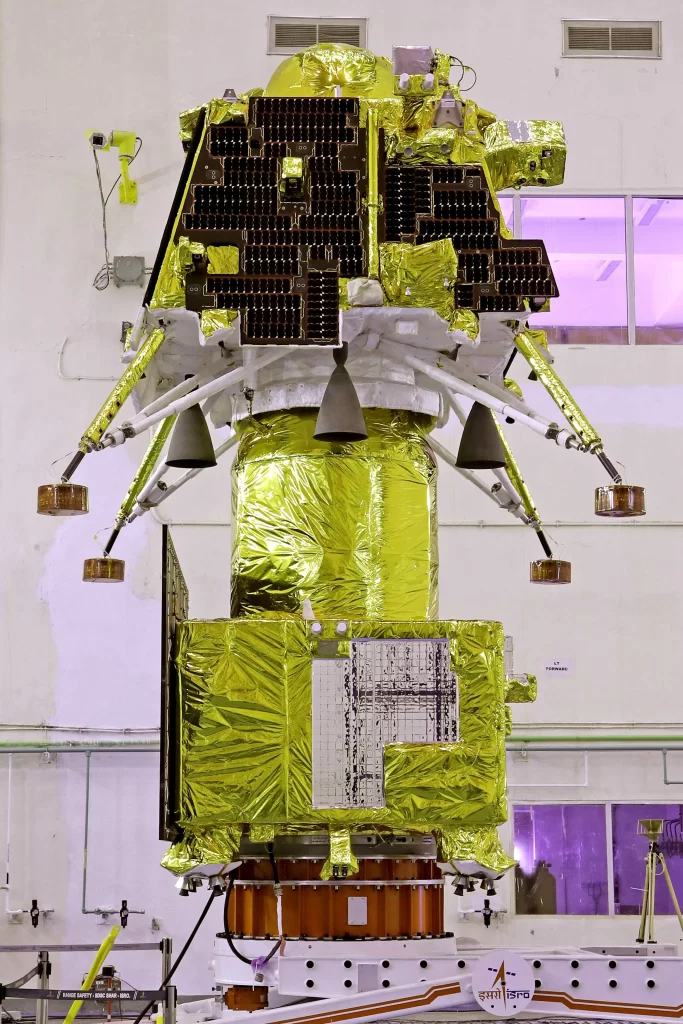
Table of Contents
Introduction
India’s space agency, the Indian Space Research Organization (ISRO), is gearing up for its next lunar mission, Chandrayaan 3. This ambitious mission aims to soft-land a lander and rover on the lunar surface, following the setback faced during the Chandrayaan 2 mission in 2019. Chandrayaan 3 will build upon the achievements of its predecessor and demonstrate India’s end-to-end capabilities in safe landing and exploration on the Moon. This article provides an in-depth overview of Chandrayaan 3, including its objectives, spacecraft design, mission profile, and scientific payloads.
Mission Objectives
The primary objectives of Chandrayaan 3 are threefold:
- Safe and Soft Landing on Lunar Surface: Chandrayaan 3 aims to achieve a successful soft landing on the lunar surface, specifically targeting the polar region of the Moon. This is a significant challenge as only a few countries have accomplished this feat so far.
- Rover Exploration: Once landed, the mission will deploy a rover to conduct in-situ scientific experiments and explore the lunar surface. The rover will analyze the elemental composition and mineralogy of the regolith, providing valuable insights into the Moon’s geological history.
- In-situ Scientific Experiments: Chandrayaan 3 will carry a suite of scientific payloads to conduct experiments on the lunar surface. These experiments include measuring thermal properties, studying seismic activity, analyzing plasma density, and performing lunar laser ranging studies.
By achieving these objectives, Chandrayaan 3 aims to enhance our understanding of the Moon’s composition, geology, and potential for future human exploration.
Spacecraft Design
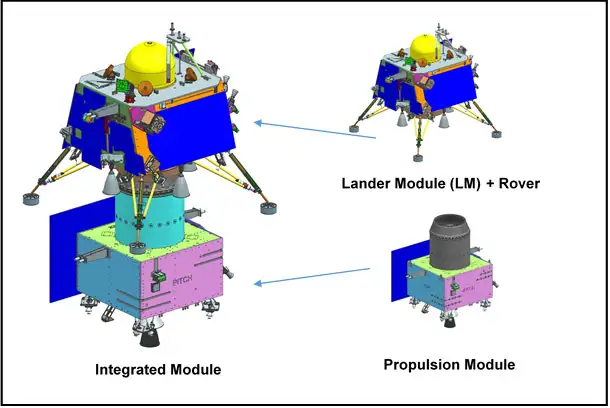
Chandrayaan 3 consists of three main components: the Lander Module (LM), the Propulsion Module (PM), and the Rover. The LM and Rover are designed to work together, while the PM acts as a carrier and communications relay satellite.
Lander Module (LM)
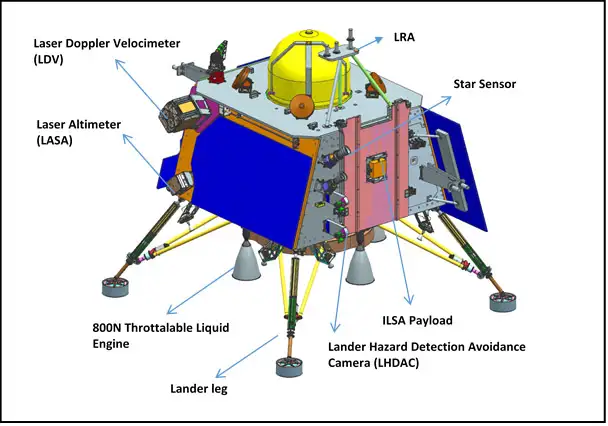
The LM is similar in configuration to the lander used in Chandrayaan 2. It has undergone improvements to address the vulnerabilities that led to the unsuccessful landing of the Vikram lander. The LM carries advanced scientific instruments to carry out experiments on the lunar surface.
The key features of the LM include:
- Advanced Sensors: The LM is equipped with various sensors, including altimeters, velocimeters, inertial measurement systems, and star sensors, to ensure a safe touchdown and precise navigation.
- Propulsion System: The LM utilizes a bi-propellant propulsion system, consisting of throttleable engines, to control its descent and landing. It also has attitude thrusters for precise maneuvering.
- Hazard Detection and Avoidance: The LM is equipped with hazard detection cameras and processing algorithms to identify and avoid potential obstacles during landing.
Propulsion Module (PM)
The PM plays a crucial role in carrying the LM and Rover to the lunar orbit. It is responsible for the injection of the integrated module into an elliptic parking orbit and subsequent transfer to a 100 km circular polar lunar orbit. The PM also acts as a communications relay satellite between the LM/Rover and Earth.
Notably, the PM also carries a scientific payload called Spectro-polarimetry of Habitable Planet Earth (SHAPE). This instrument will study the spectral and polarimetric measurements of Earth from the lunar orbit, contributing to our understanding of habitable planets beyond our solar system.
Rover
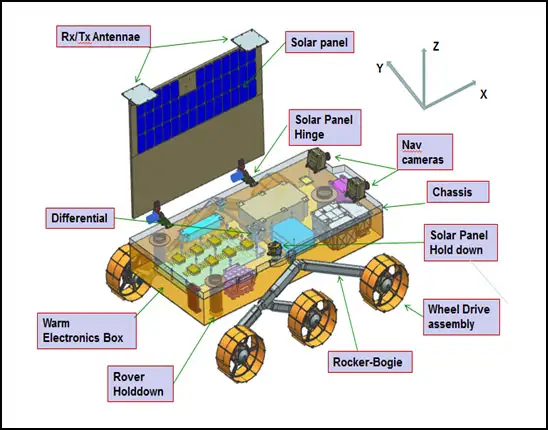
The Rover is a compact and mobile vehicle designed to traverse the lunar surface and perform scientific experiments. It carries advanced instruments to analyze the elemental composition and mineralogy of the regolith.
Key features of the Rover include:
- Alpha Particle X-ray Spectrometer (APXS): This instrument enables the determination of the elemental composition of lunar soil and rocks in the vicinity of the landing site.
- Laser Induced Breakdown Spectroscope (LIBS): The LIBS instrument uses laser-induced plasma to study the elemental composition of the lunar surface, providing insights into its mineralogy.
Mission Profile
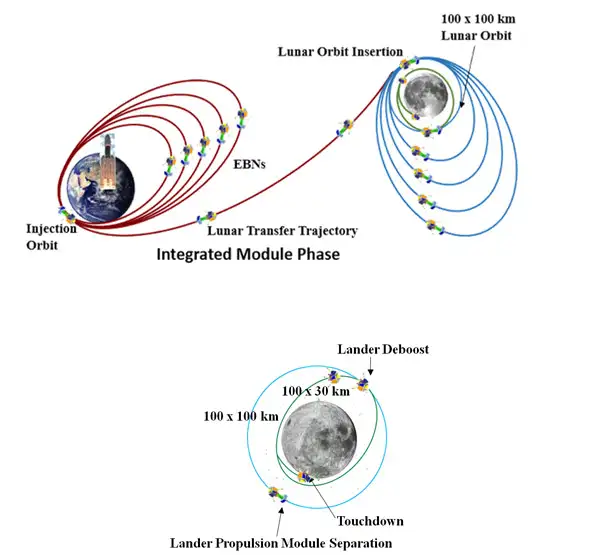
Chandrayaan 3 is scheduled to be launched in mid-July, with a specific date yet to be announced. The launch will be conducted using the Geosynchronous Satellite Launch Vehicle Mk-III (GSLV Mk-III), also known as the “Bahubali” of rockets. This powerful rocket has demonstrated its capabilities in previous missions, including the successful launch of Chandrayaan 2.
The mission profile of Chandrayaan 3 involves several phases:
- Launch and Injection: The GSLV Mk-III rocket will lift off from the Satish Dhawan Space Centre in Sriharikota, carrying the integrated module of the PM, LM, and Rover. The rocket will inject the module into an elliptic parking orbit.
- Transfer to Lunar Orbit: The PM will utilize its propulsion system to transfer the integrated module from the elliptic parking orbit to a 100 km circular polar lunar orbit. This phase ensures the module’s positioning for the subsequent descent and landing.
- Descent and Landing: Once in the lunar orbit, the PM will separate from the LM and Rover. The LM, equipped with advanced sensors, will descend towards the lunar surface, aiming for a soft landing. The exact landing site will be in the polar region of the Moon, allowing for unique scientific exploration.
- Rover Exploration: After a successful landing, the Rover will be deployed from the LM onto the lunar surface. It will commence its exploration mission, traversing the terrain, and conducting in-situ scientific experiments.
- Mission Duration: The LM and Rover are designed to operate for approximately one lunar day, equivalent to about 14 Earth days. During this period, they will gather valuable data and relay it back to Earth.
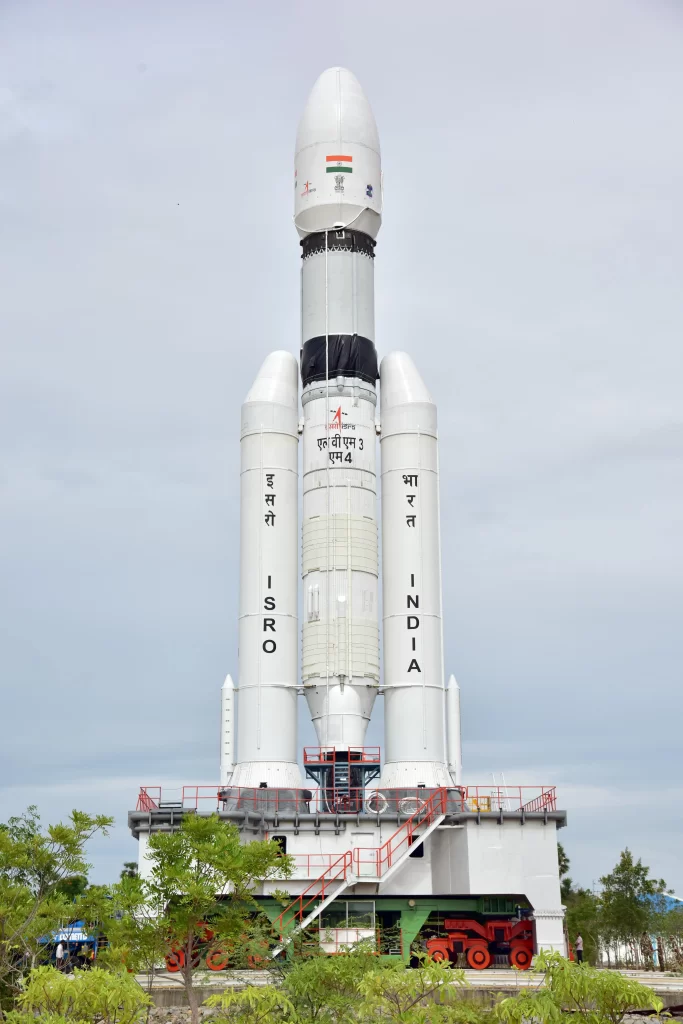
Scientific Payloads
Chandrayaan 3 carries a range of scientific payloads on board the LM, Rover, and PM. These payloads enable various experiments and measurements to be conducted on the lunar surface and from lunar orbit.
Lander Payloads:
- Chandra’s Surface Thermophysical Experiment (ChaSTE): This experiment aims to measure the thermal conductivity and temperature of the lunar surface. It provides insights into the thermal properties of the regolith.
- Instrument for Lunar Seismic Activity (ILSA): ILSA is designed to measure seismic activity around the landing site. It helps in understanding the geology and internal structure of the Moon.
- Langmuir Probe (LP): LP is used to estimate the plasma density in the lunar environment and monitor its variations.
- Laser Retroreflector Array (LRA): Provided by NASA, the LRA is a passive experiment used for lunar laser ranging studies. It helps in precisely determining the distance between the Earth and the Moon.
Rover Payloads:
- Alpha Particle X-ray Spectrometer (APXS): The APXS instrument analyzes the elemental composition of the lunar soil and rocks near the landing site. It provides valuable data on the abundance of various elements.
- Laser Induced Breakdown Spectroscope (LIBS): LIBS uses laser-induced plasma to study the elemental composition of the lunar surface. It helps in understanding the mineralogy and composition of the regolith.
Propulsion Module Payload:
- Spectro-polarimetry of Habitable Planet Earth (SHAPE): SHAPE is a scientific payload carried by the PM. It analyzes the spectral and polarimetric measurements of Earth from the lunar orbit, contributing to the study of habitable exoplanets.
Conclusion
Chandrayaan 3 represents India’s determination to overcome challenges and continue its exploration of the Moon. With its focus on safe landing, rover exploration, and scientific experiments, this mission aims to expand our knowledge of the lunar surface and contribute to our understanding of the Moon’s geology and potential for future space exploration. As India prepares for the launch of Chandrayaan 3, the nation eagerly awaits another opportunity to make significant strides in space exploration and reaffirm its position as a prominent player in the global space community.
By achieving these objectives, Chandrayaan 3 aims to enhance our understanding of the Moon’s composition, geology, and potential for future human exploration.
source and photos: isro
